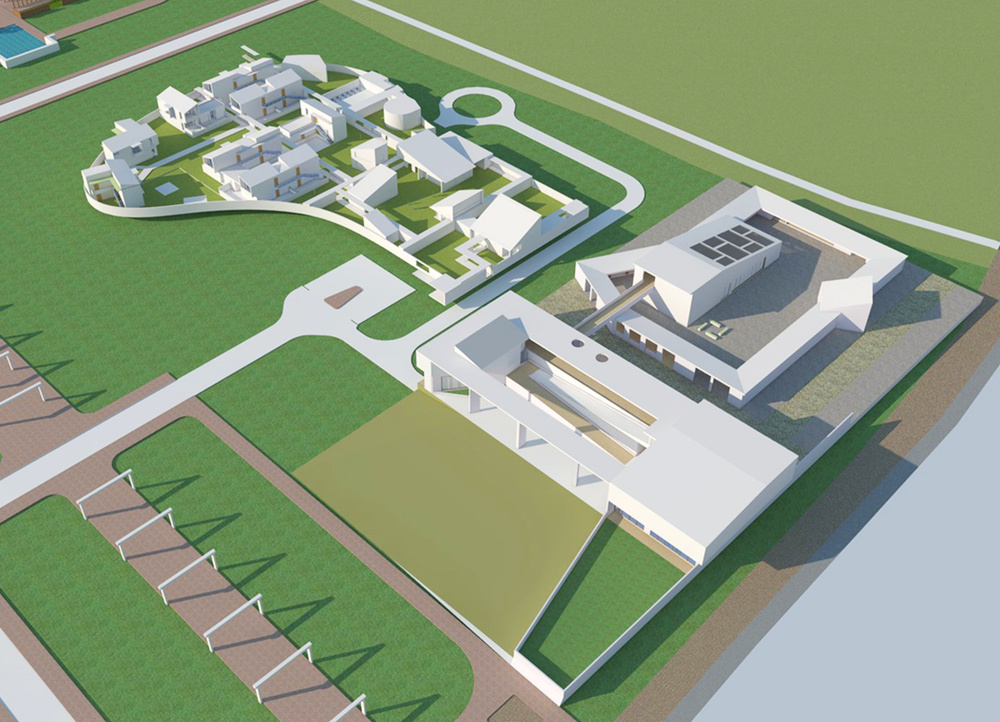
The idea of a symbiotic development of the Nalanda Heritage Area and the villages around it was discussed by the Planning Commission, and a preliminary report was prepared that outlined development measures in Nalanda and 16 surrounding villages, including the need to upgrade tourism and visitor facilities and pedestrian improvements in the core heritage area in Nalanda.
Ecological Restoration and Pedestrian-Oriented Framework Plan
Nalanda Master Plan is an integrated approach towards area-level urban design, landscape restoration, infrastructural remediation, and architectural interventions in infill sites adjacent to the core heritage zone.
After an existing assessment of tourism and local facilities, including landscape features and parks, three water tanks (pokhars) featured prominently in the historic landscape outside the heritage zone along with the Hsuen Tsang Memorial Park (completed in 1984). As all these locations are accessed via car, the New Framework Plan is based on a pedestrian link between Nalanda Ruins, Pokhar, and the memorial park. The ecological protection of the historic tank system and safeguarding water hydrology system were also highlighted in the proposal, along with the rest and shade structures along the 15-minute trail.
The proposal for a Visitor Centre was developed on a site owned by the tourism department behind Memorial Park lying outside the core heritage zone. The new centre would facilitate tourism arrival and interpretation, including arrival parking and transfer to EV carts for access to the main heritage zone. A provision for small conference and meeting facilities for 135 persons acts as a platform for academic, research, and archaeology-oriented study and discussions.
The proposal for the Retreat with 25 rooms is meant to increase accommodation facilities in the area. The retreat facilities are directly connected to the visitor centre and can be used as accommodation for visiting artists and guests to the conference centre.
The landscape trail system connects this new centre to the heritage zone for a new pedestrian experience. It encourages day visitors to spend more time in the historic living landscape. The facilities are meant to support local livelihood generation and, in particular, Bhawan Bhuti embroidery clusters in and around Nalanda villages. Eventually, the trail system would link existing institutions (ASI Museum, Nav Nalanda Campus, and Upendra Maharathi Campus) into a common pedestrian system with site-specific interpretation signage.
Seeking an Architectural Paradigm
With the many inspirations from the heritage zone, various iterations of the program, and stakeholder discussions, the design of the Visitor Centre was developed around a two-courtyard system, a wrap-around system of low arcades, to create an enclosure system that would allow areas for kiosks and vendors and activate the courtyards.
A multipurpose hall with outdoor space is also provided for larger gatherings. Workshops for artists and children are provided, along with an amphitheatre that can be used for performances and gatherings.
The Arrival Courtyard is at an elevated level and is based on a brick-plinth system that we see in the heritage zone. The pedestrian ramp leads the visitors into the main exhibition hall and conference zone while bridging across to the Performances courtyard. The space in between the two blocks is designed as a haat and links to the entry to the Retreat. The vihara typology in the heritage zone has informed the layout for the Retreat block, which also houses a reading room and meditation courtyards.
Renders:
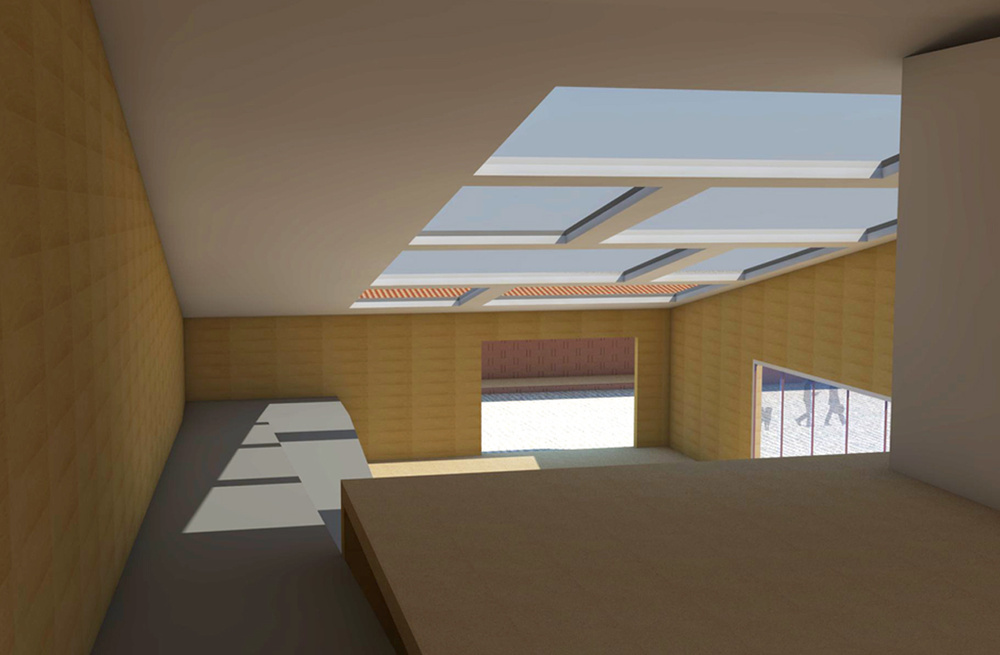
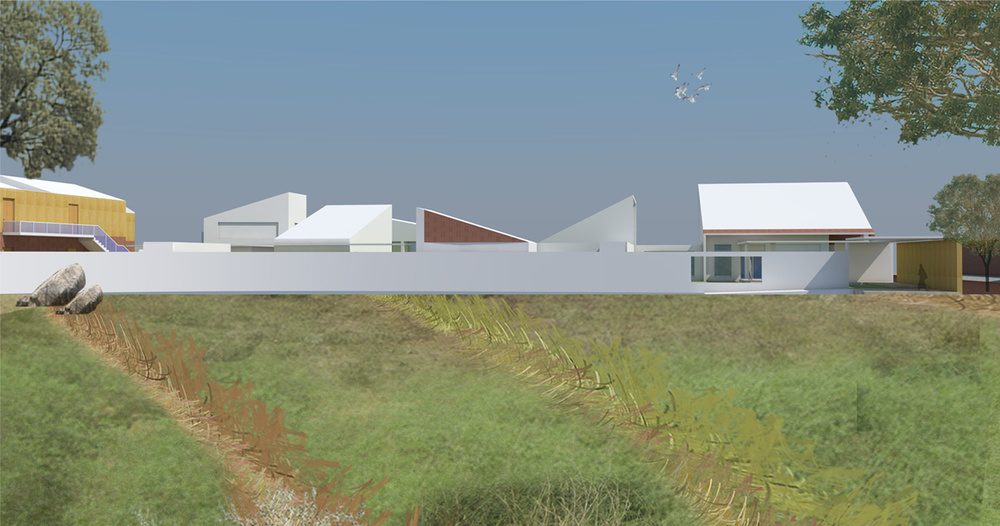
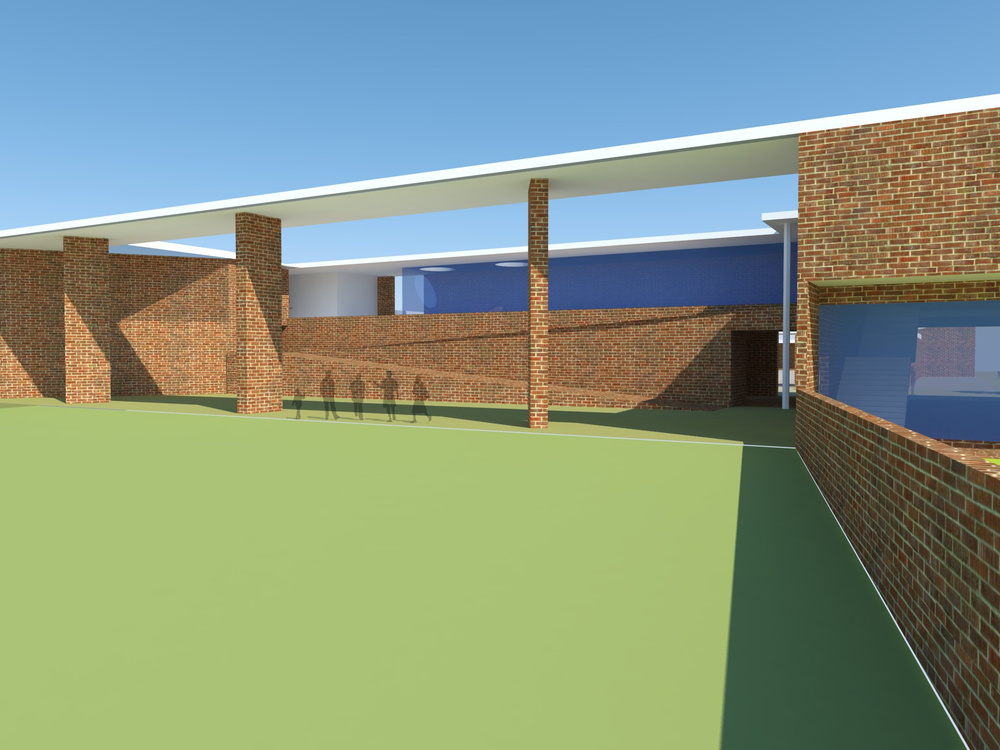
Conceptual Sketches:
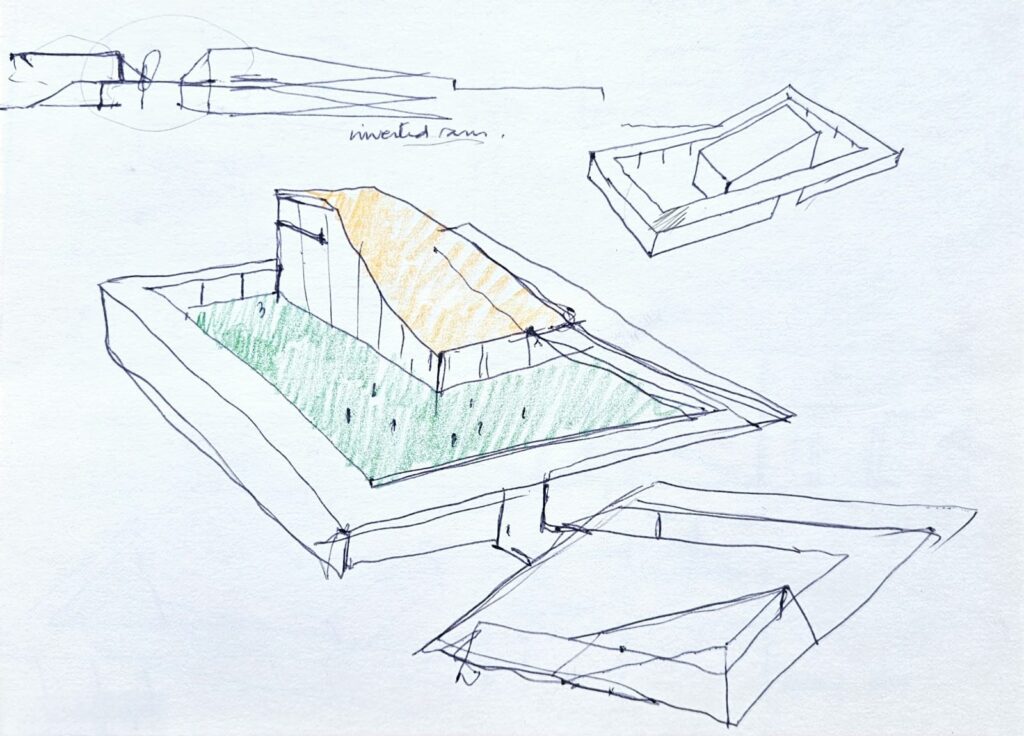
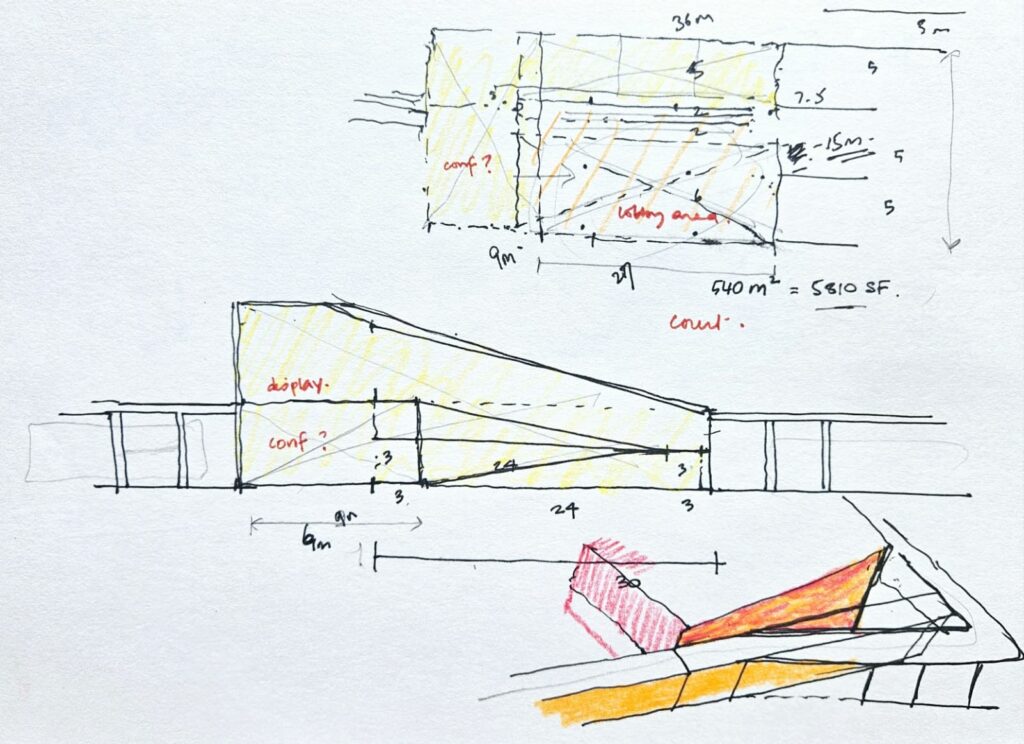
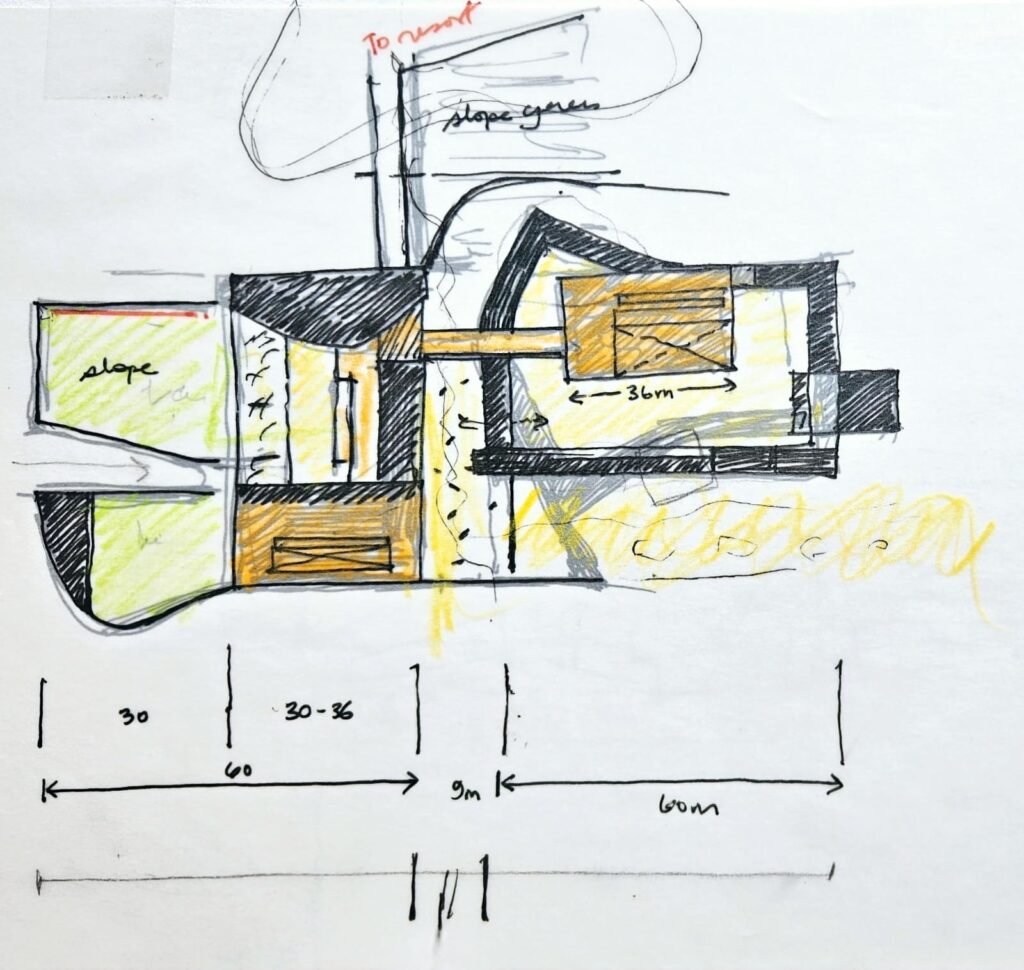
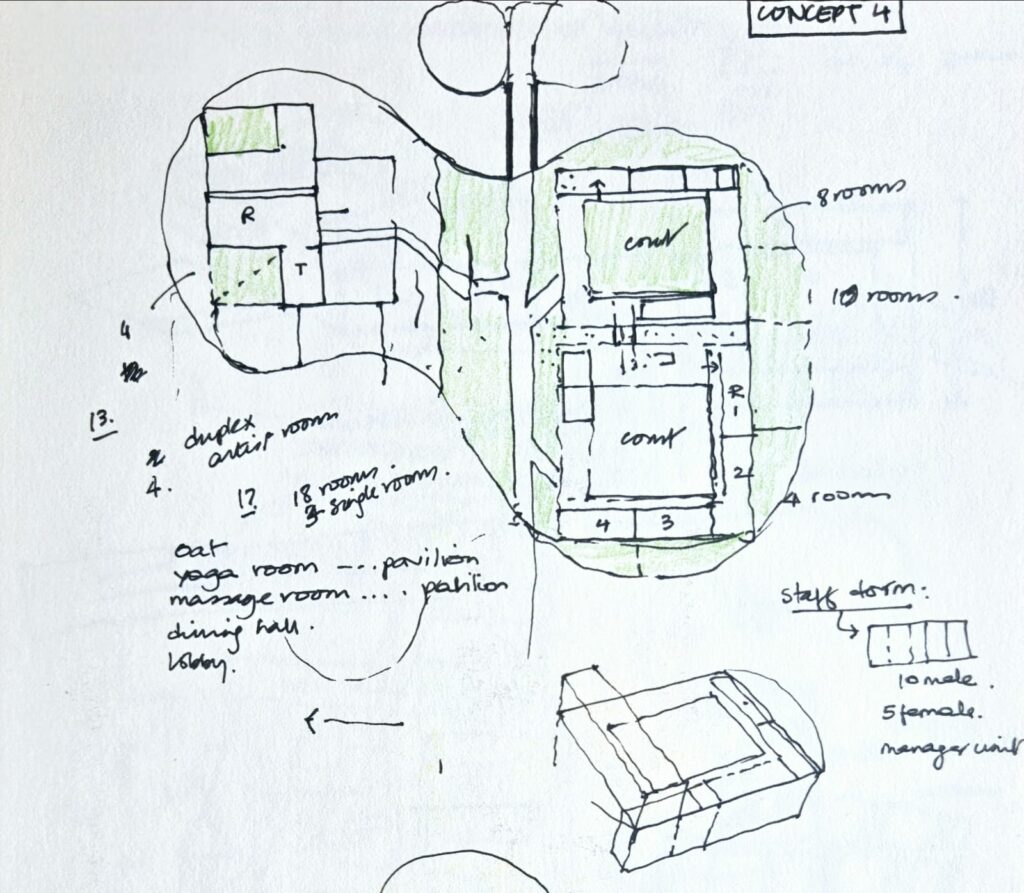
Drawings:
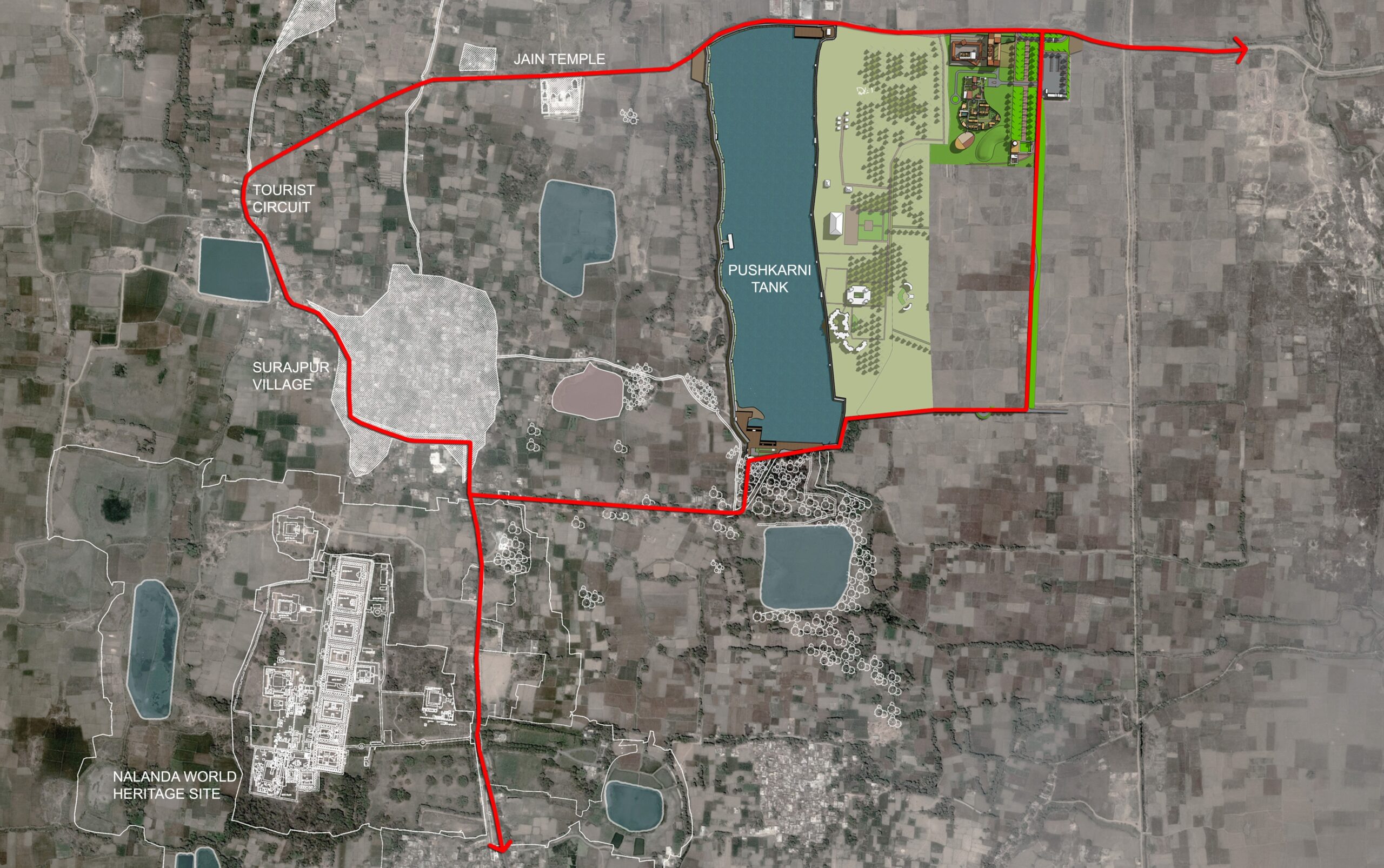
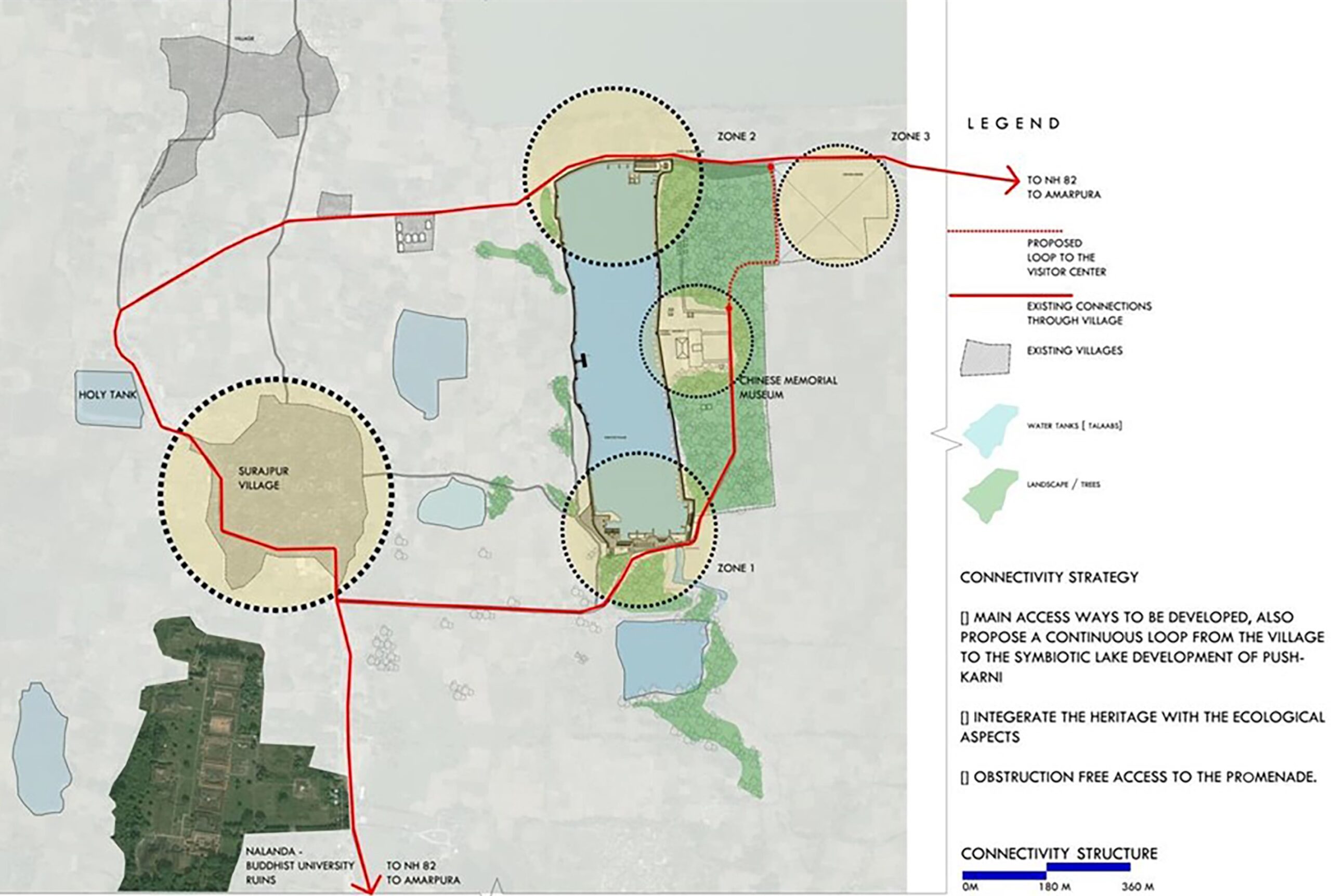
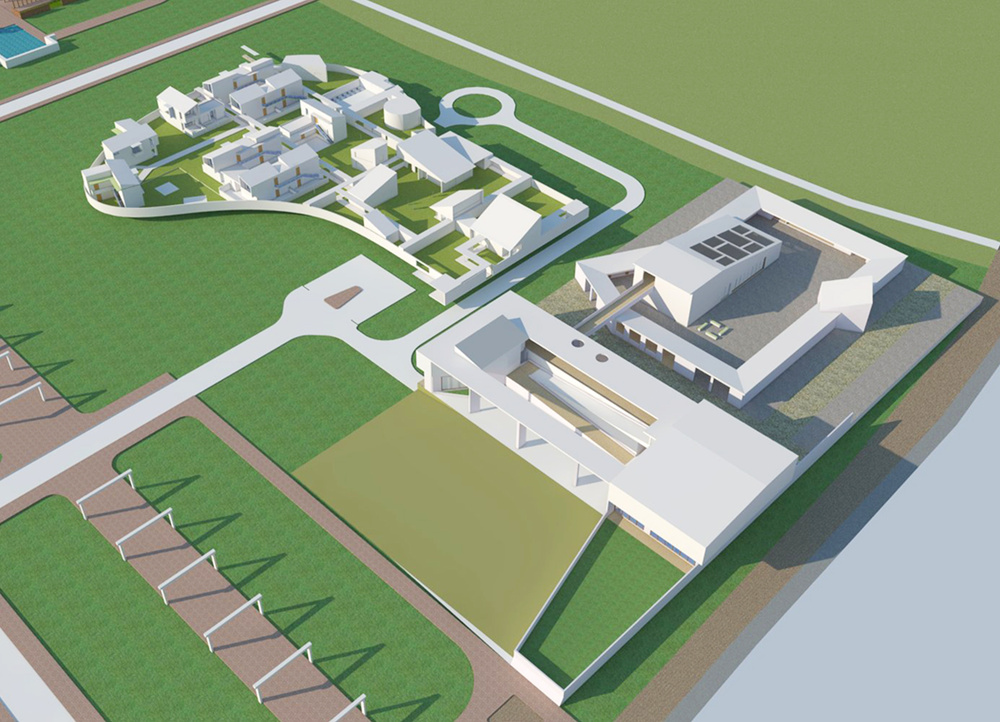
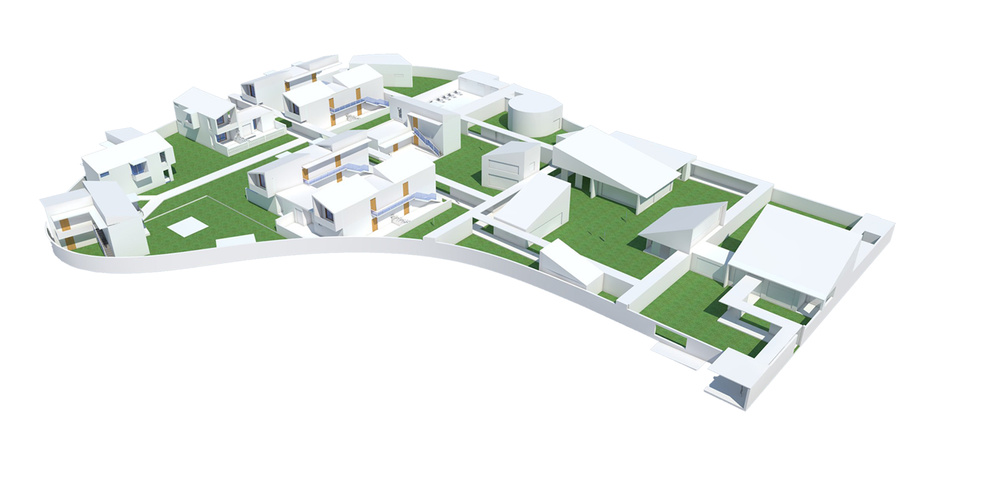
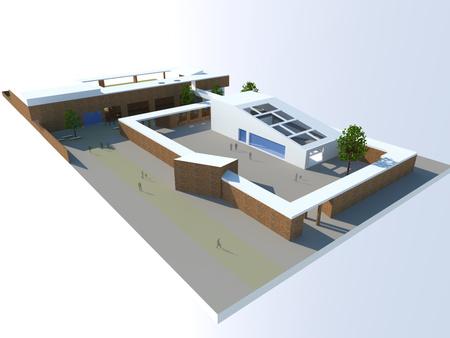
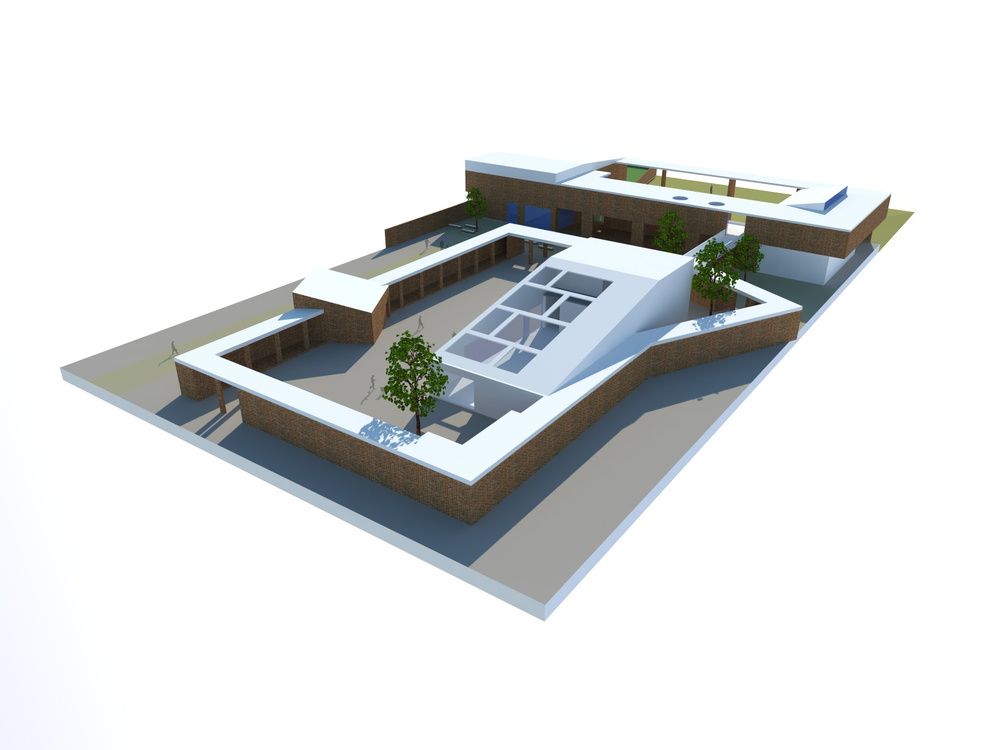
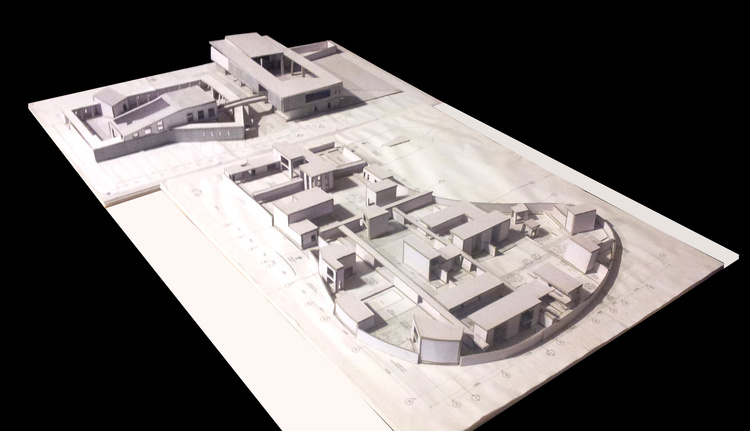
Project Details:
Name: Nalanda Heritage Master Plan
Location: Nalanda, Bihar, India
Proposed by: NilaA Architecture and Urban Design
Duration: 2015-
Area: 2,500 sq. m.
Client: State Tourism Department


